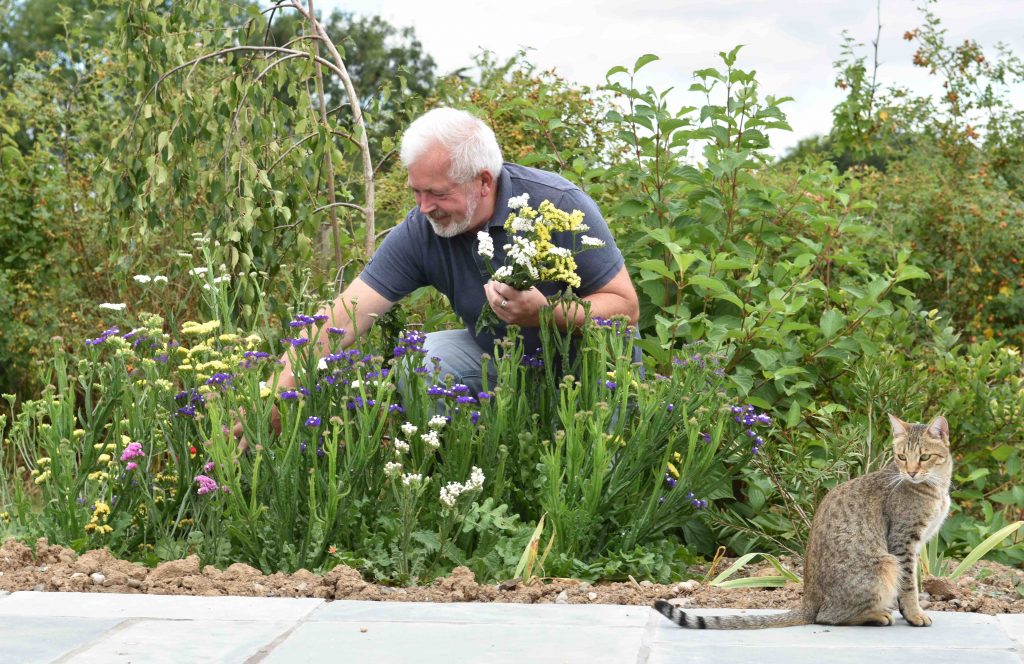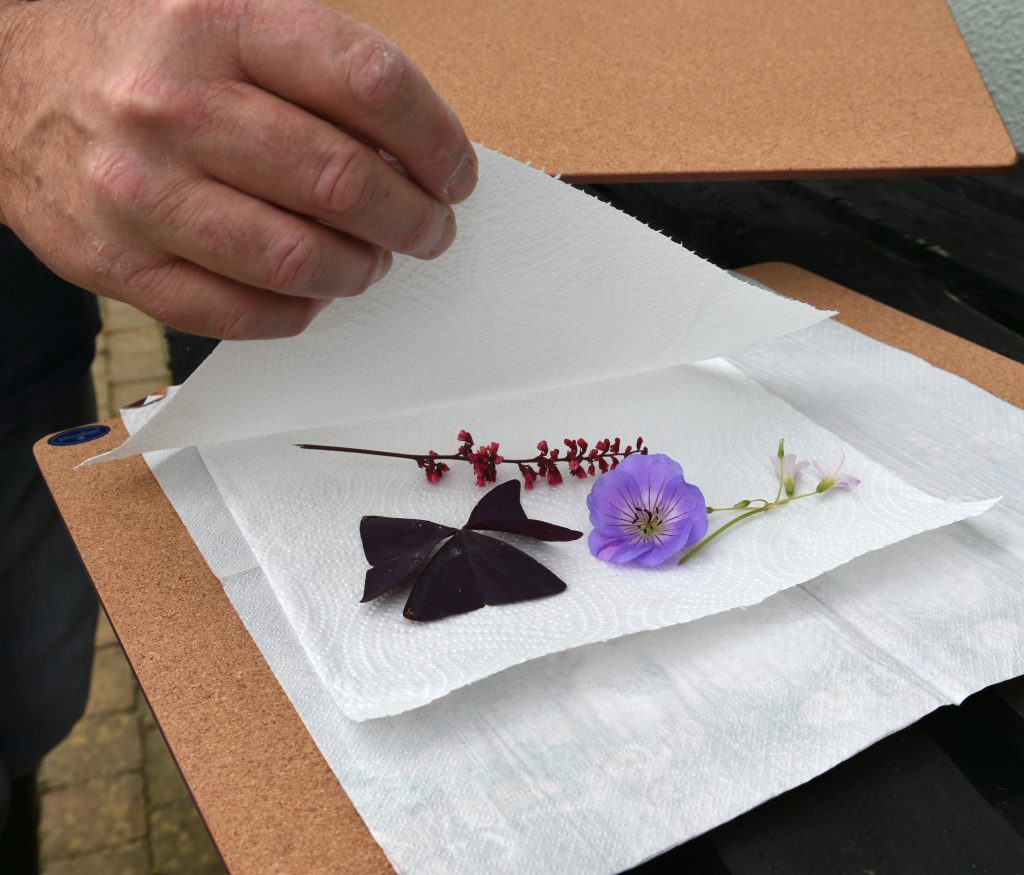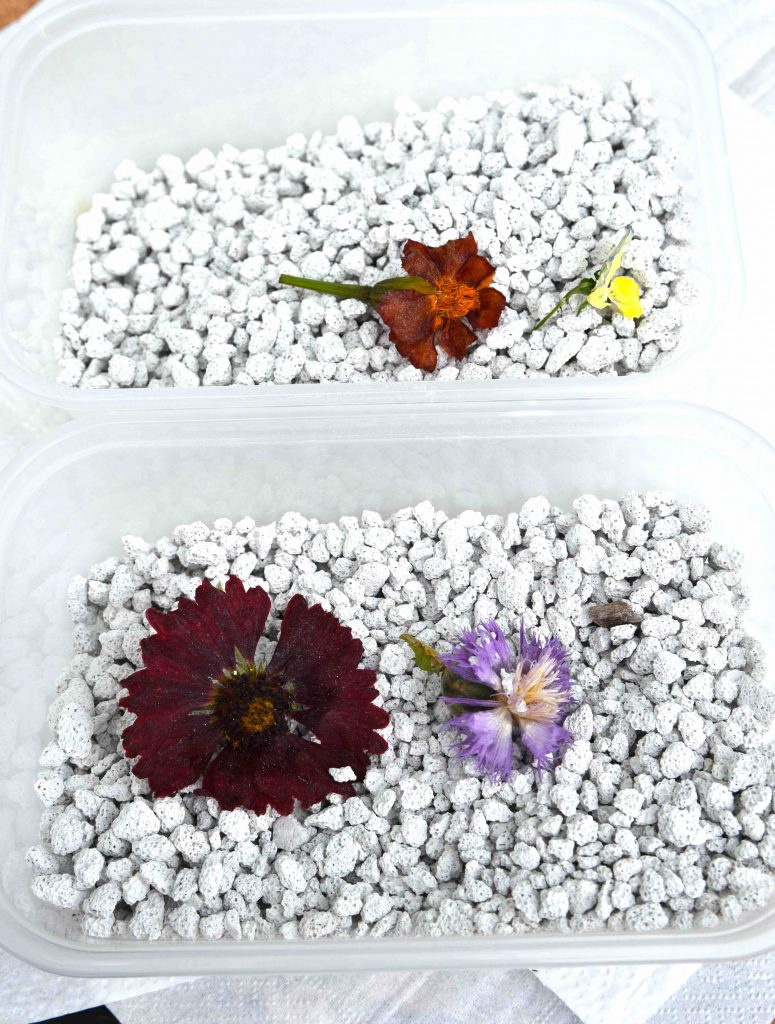
There are various ways we can keep the colours of summer in our homes over winter. Simply drying flowers is the easiest but not all flowers can be cut, hung up and dried. There are alternatives of course and with some ingenuity a large range of blooms can be preserved.
I hate plastic plants and silk flowers so I always grow some flowers specifically for drying, for vases in winter. They do get a bit dusty but they can be replaced each year and the old flowers composted. My favourite flowers for drying are statice (above). These are easy to grow from seed, sown in gentle heat in spring and planted out in late May. They bloom in the garden for ages, will attract butterflies to the garden and they are easy to dry – just hang them up in small bunches in an airy shed.
Hydrangeas are also quite easy to dry. You just cut them and strip off most of the leaves and put them in a vase of water. Then just let them dry in the vase, using up all the water. Eventually they will completely dry and can then be used in their natural colours or sprayed.
The easiest way to preserve flowers is by pressing them. You can press them in old books, between sheets of cardboard or in a flower press.

This method works best for small and flat flowers and you may need to manipulate the petals slightly before pressing. Use kitchen paper or toilet paper for pressing and change this regularly, especially if the flowers are rather thick, so the flowers dry and do not go mouldy.
If you want 3D flowers you can dry flowers in sand. I tried this many years ago in an old biscuit tin (not plastic) and at low temperatures as the oven cooled. It worked quite well and is useful for roses where you can pour the sand between the petals to maintain their shape. Bringing the technique up to date, I thought I would try using (clean) cat litter.

Now, cat litter varies and even as a seasoned buyer I sometimes get confused. You can get mega-expensive litter that is full of water-absorbing gel and this might be the best option but Mia (top photo) gets a mix of mid-range non-clumping litter and wood pellets, (which I am not going to use here). If you haven’t had much to do with cat litter, don’t worry – it is clean when it comes out of the bag. But it can be dusty so I would not use the cheapest, clumping litters for this.
After all that, I just used plastic, microwave-safe containers half filled with litter. I put the flowers on and into this, covered with more litter and heated on full power for 30 seconds. The container was warm, which meant the water in the flowers had been heated, so I let it cool for an hour and repeated. I put them in for a third ‘zap’ of microwaves and left the container to cool/dry overnight. I was careful not to overheat in case it affected the colour of the flowers so 30 seconds was enough each time. I was pleased with how the process dried out difficult, complex blooms including gaillardia, centaurea and marigolds, keeping their shape. These can now be used in a variety of ways and the litter can be used again to dry more blooms or used in the litter tray.
It is best to pick flowers and seed pods on a sunny, dry day for drying. With a bit of imagination there are lots of flowers, foliage and pods to preserve for autumn and winter decorations and projects. Individual dried flowers can be wired or use a hot glue gun to stick them to twigs.
Weekly reminders
Dig potatoes if the tops have died off due to drought. In stormy weather, when the foliage of potatoes remains wet, potato blight will kill the tops, turning the foliage black, rather than the brown of drought.
Although it is not possible to water the general garden try to keep patio pots moist. It will help to keep them moist if you can move them into shade.
Take cuttings of fuchsias and pelargoniums.
Cut down summer-fruiting raspberries. Cut away the fruited canes and tie in the new canes to fruit next year.
Trim hedges
It is the last chance to prune plums, peaches and cherries